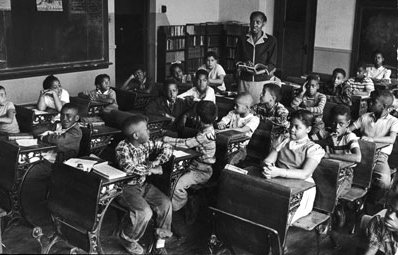×
|
|
Brown v Board of Education of Topeka Trial 1951 (The trial that led to the landmark Supreme Court decision in 1954) |
|
|
|
||
|
|
||
|
|
||
|
|
 Carl Iwasaki/Time & Life Pictures/Getty Images Segregated Monroe Elementary School in Topeka, Kansas, where Linda Brown attended school. |
|
|
|
||
|
Excerpts |
||
|
Decision & Findings |
||
|
|
|
|
|
on Brown |
||
|
1954 Decision |
||
|
Bibliography |